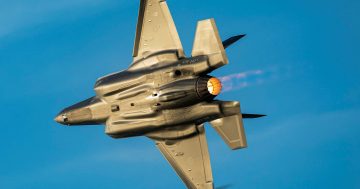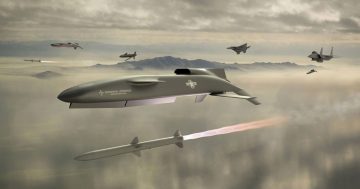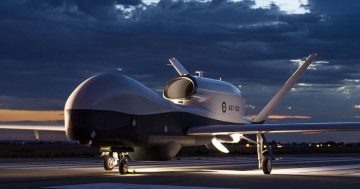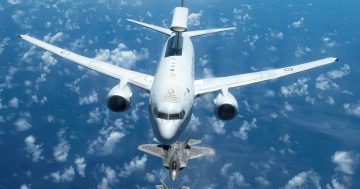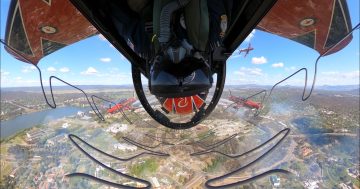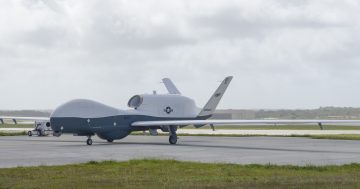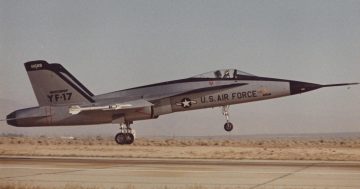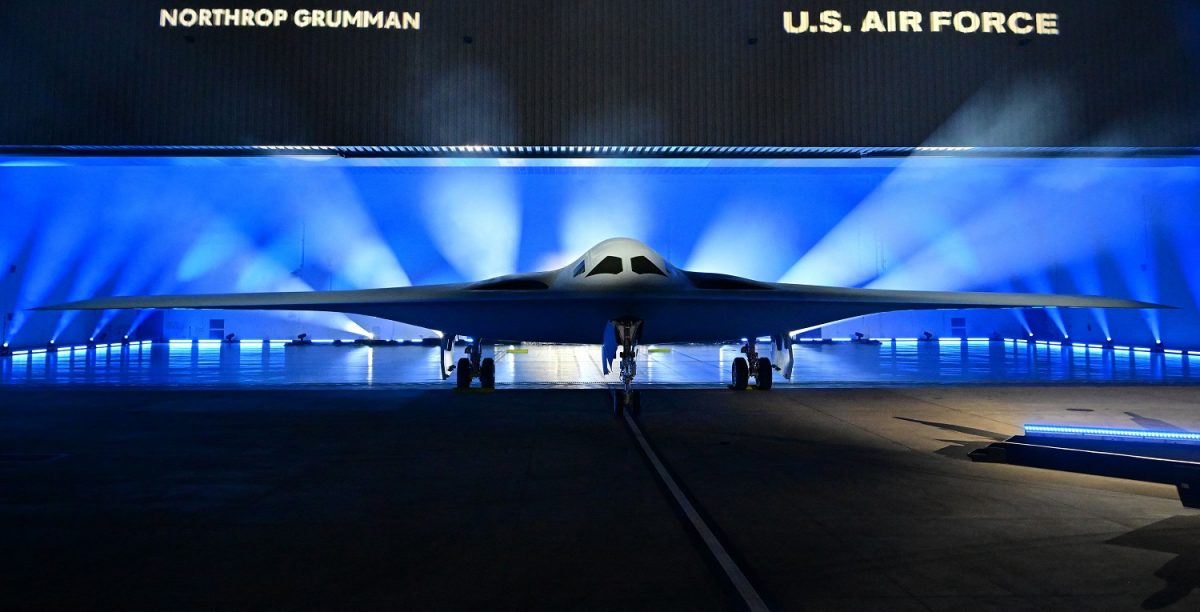
The first Northrop Grumman B-21 Raider at its unveiling on 2 December. Photo: US Air Force.
The US Air Force has unveiled its new B-21 ‘Raider’ stealth bomber – the first new bomber for the service in 34 years.
Named ‘Raider’ in honour of the famous 1942 ‘Doolittle Raiders’ bombing raid on Tokyo just three months after Japan’s attack on Pearl Harbour, the aircraft was unveiled to a select group of dignitaries, media and employees from manufacturer Northrop Grumman at the sprawling Palmdale Plant 42 complex near Los Angeles in California on 2 December.
The attending dignitaries included Royal Australian Air Force Chief AIRMSHL Robert Chipman, and British Royal Air Force chief ACM Mike Wigston. With speculation rife of interest in the B-21 within the RAAF or the possible establishment of a joint B-21 force under the AUKUS construct, their attendance was of interest.
The B-21 resembles the Northrop B-2A Spirit – the first ‘stealth bomber’ – in that it is a flying wing with no distinct fuselage or tail. It builds on the company’s long legacy of building advanced crewed, and uncrewed aircraft with this configuration.
In the late 1970s, the US Air Force articulated its requirement for a new Advanced Technology Bomber (ATB), one that would replace the venerable Boeing B-52 and would be invisible to enemy radar systems. But despite its advances, the B-2A never replaced the B-52, and only 21 jets were built from an original requirement of more than 120. With a program cost of US$40 billion, each aircraft cost an eye-watering US$1.9 billion.
The B-2A was designed in secret before being rolled out at Palmdale in 1988. Its smooth curves with indistinct shapes, blended cockpit and dark grey coatings gave it a futuristic and sinister appearance that appeared straight from a science-fiction writer’s dream, but all of these had a purpose.
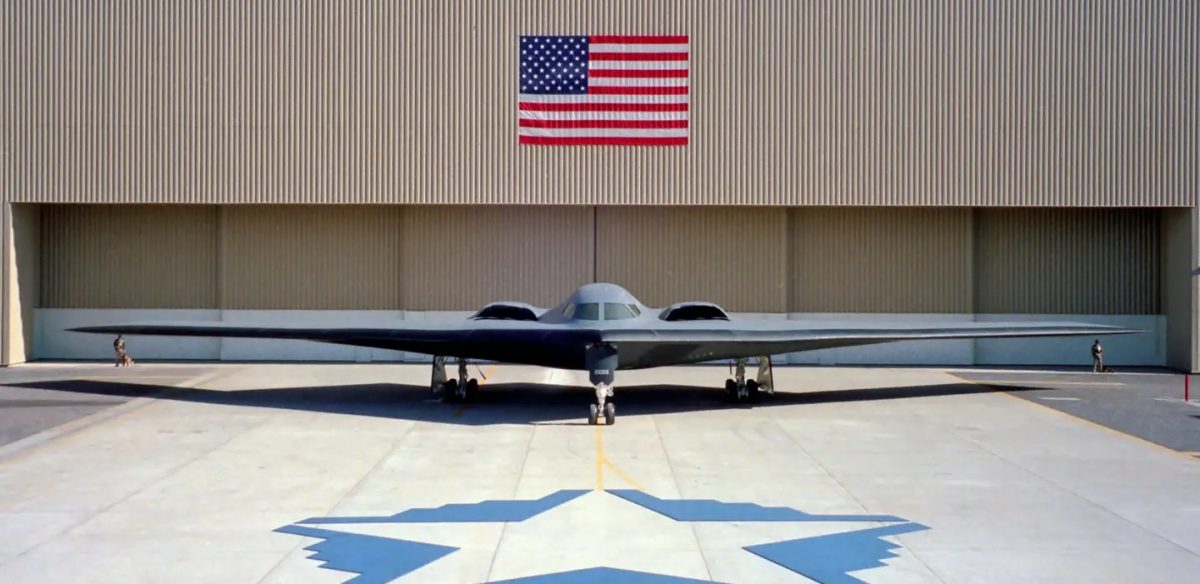
The B-21 has a similar flying wing configuration to its B-2A predecessor, shown here at its rollout in 1988. Photo Northrop Grumman
The word stealth is an all-encompassing and somewhat over-used cliché that cannot be applied to a single attribute of an aircraft. Stealthy – or more accurately, low or very-low observable (LO/VLO) – aircraft have several design elements built in from the ground up to make them less able to be tracked by radar.
The most noticeable of these is the aircraft’s shape – at first glance, most of its leading and trailing edges will be aligned or parallel, while curved upper and lower surfaces will have as few notches or hard angles as possible.
During manufacture, where possible, the aircraft’s internal structure is designed to absorb radar waves instead of reflecting them, either through shaping or the use of special radar absorbent materials (RAM). The tolerances when fitting major components and panels to the aircraft are incredibly fine and consistent, and fasteners are flush with the aircraft’s surface.
Engines are buried deep inside the fuselage, and air intakes are coated liberally in RAM and follow a curved path so the engine face cannot reflect radar waves. Engine tailpipes either have jagged or toothed edges that absorb radar waves and disperse the heat plume and acoustic signature. In the case of the B-2A and likely the B-21, they are buried deep inside a slot in the tail section that thermally masks the exhaust from underneath.
The aircraft’s air data sensors, communications and electronic warfare antennas, and other sensors are embedded into the airframe to avoid reflective edges, while the doors for maintenance panels, weapons bays, and landing gear bays will have serrated edges and close-fitting overlaps to avoid gaps. Weapons are mostly carried internally, although provision has been made on smaller VLO aircraft, such as the F-35, to carry weapons externally if required.
The cockpit windows or canopy will have no sharp edges or gaps and has a fine layer of gold between the two sheets of plexiglass to prevent radar waves from entering the cockpit or emissions from escaping. Finally, the aircraft’s external coatings will have a high percentage of RAM.
And if all else fails, some VLO aircraft, like the F-35, have infrared, electro-optical, and electronic sensors placed around the aircraft to detect threats like incoming missiles. They can deploy infrared flares and radar-defeating chaff, and may even have a towed decoy to attract radar-homing missiles.
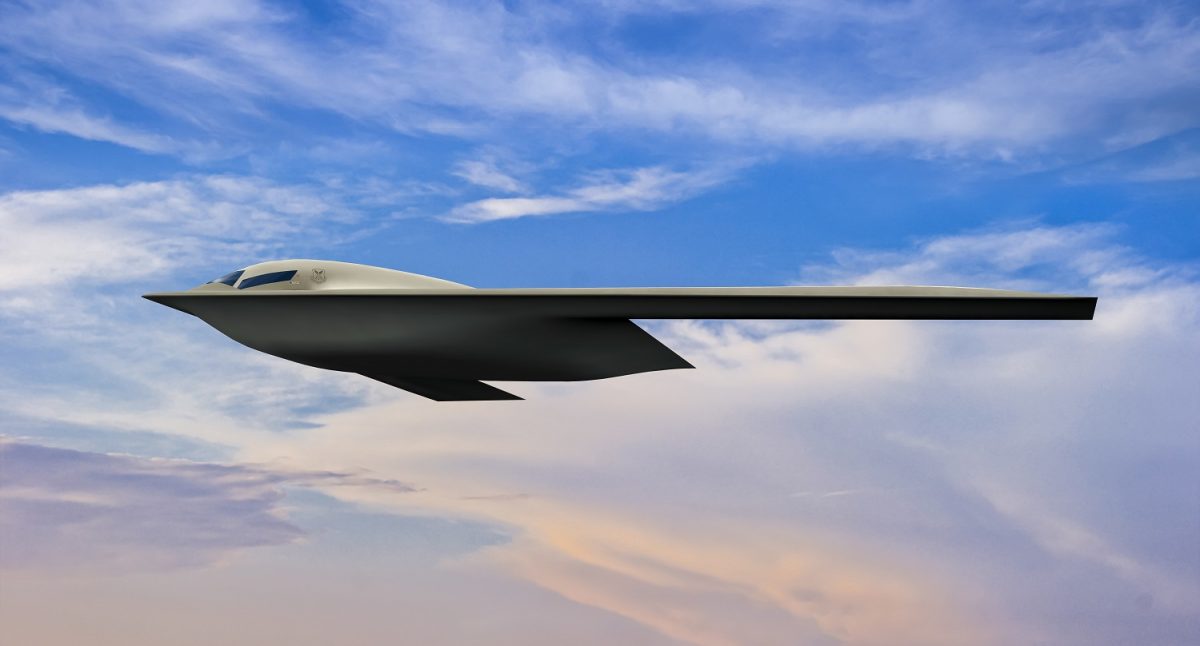
Concept art of the B-21 Raider in flight. Image: US Air Force.
During the B-21’s unveiling, the live stream and official images showed the aircraft only from directly in front with low lighting, intentionally providing few clues to the detailed shaping. On face value, it appears slightly smaller than the B-2A but has a deeper underside keel area, hinting at greater fuel volume and payloads.
Informed sources have speculated that the B-21 has a wingspan of between 125 and 150 feet, is twin-engined, and has a cleaner and simpler tail or empennage than the B-2A. Its surface appears to be incredibly smooth, and there are no discernible panel lines or creases.
The US Air Force currently has a published requirement for about 100 B-21s. Its first flight is expected to take place in mid-2023, after which an intensive flight test campaign will be conducted from nearby Edwards Air Force Base.













